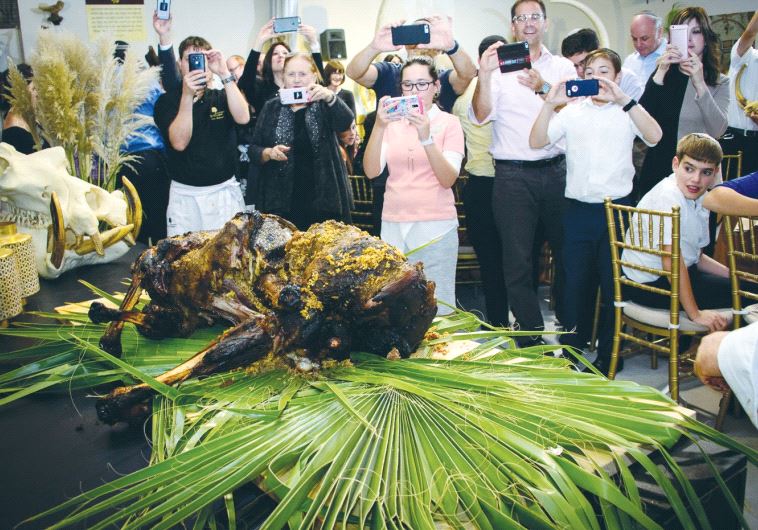A feast of biblical proportions
Beit Shemesh banquet treats diners to ancient kosher delicacies – locusts, quail and manna from heaven.
 DINERS PHOTOGRAPH the whole spit-roast deer served at the banquet yesterday(photo credit: MORDECHAI GORDON)Updated:
DINERS PHOTOGRAPH the whole spit-roast deer served at the banquet yesterday(photo credit: MORDECHAI GORDON)Updated: